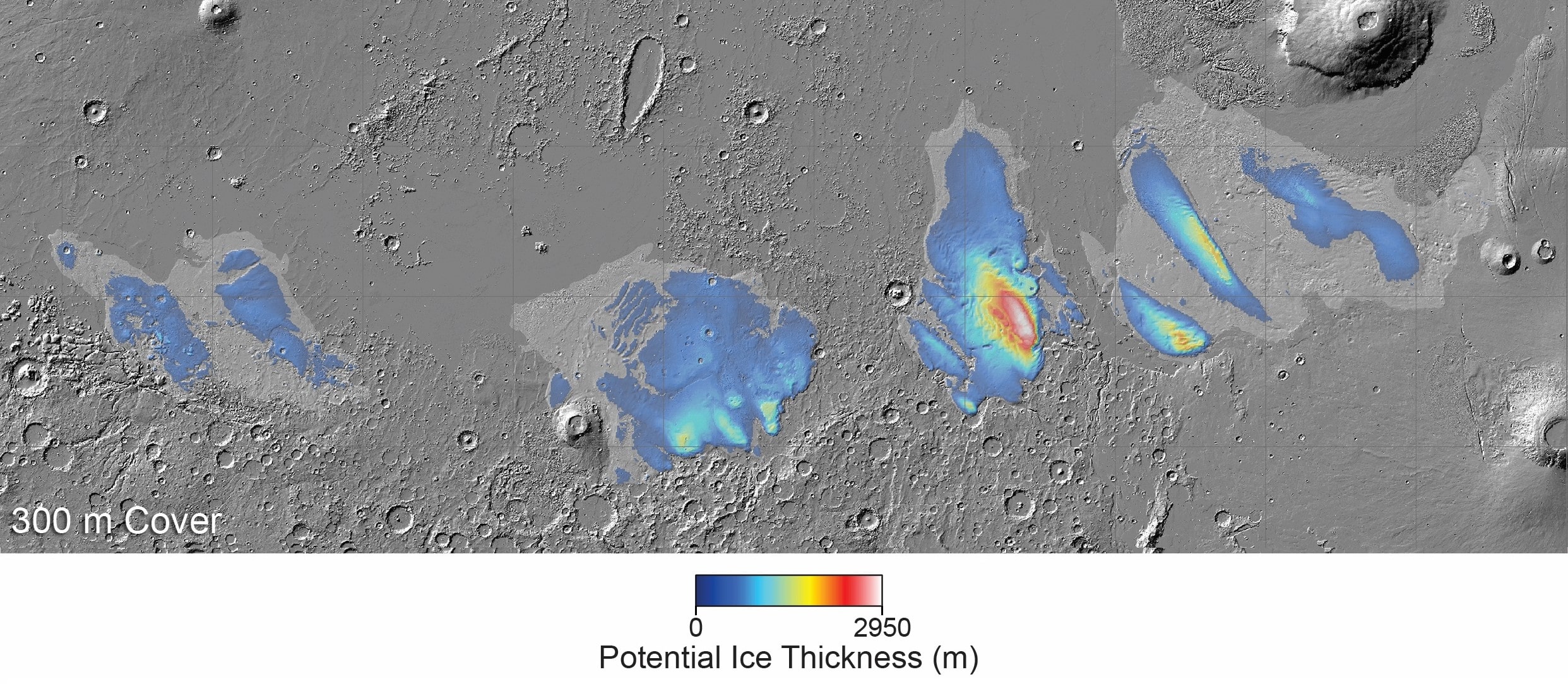Images taken of the equatorial region of Mars using radar technology have revealed what appears to be large deposits of ice buried beneath the planet's surface.
according to press release If the radar images show water ice, a shallow ocean of water between 1.5 meters and 2.7 meters deep would be enough to cover the entire planet, according to the European Space Agency. This could be an extremely useful discovery for future human exploration and occupation of Mars.
The European Space Agency's Mars Express Orbiter was responsible for the discovery. Mars Express was launched in June 2003 and has been used to study her fourth planet from the Sun since 2004. Since then, significant evidence of the current or past presence of water on Mars has been discovered. This includes the discovery of hydrated minerals.according to NASAis formed only in the presence of water.
Although this is not the first time that evidence of ice has been found on Mars, this new discovery is based on previous findings in an area known as the Medusae Fossae Formation, whose deposits were studied about 15 years ago. This is the largest potential ice deposit. I couldn't see clearly at the time.
“When we reexamined the MFF using new data from Mars Express's MARSIS radar, we found that the deposits were even thicker than we thought – up to 3.7 kilometers thick.” said Thomas Watters of the Smithsonian Institution, who was lead author on both papers. New research and first his 2007 study. “Interestingly, the radar signal is consistent with what we would expect to see from layered ice, and is similar to the signal seen from the polar caps of Mars, which we know are very ice-rich.”
MFF is a region on Mars known for large amounts of dust that can cause disastrous dust storms across the planet. When Mars Express first identified images of the deposits 15 years ago, it was suspected that the deposits could be just dust, but researchers say the new images show that the deposits may be in the water. He said it shows more evidence that it is ice.
“This is where the new radar data comes in. Given its depth, if the MFF is just a giant dust pile, we would expect it to be compressed under its own weight,” said co-author Italian National Astrophysics said Andrea Cicchetti of the Research Institute. “This would actually produce something much denser than what we're seeing with MARSIS. And when we modeled how different materials behave without ice, the MFF There was nothing that could replicate the properties of ice. You need ice.”
The discovery was made from a spacecraft orbiting far above the Earth's surface, so it will likely be years or even decades before we know for sure, but the European Space Agency says it is a comprehensive understanding of the discovery. He emphasized that it is important information for people. This planet has a good chance of being inhabited by humans someday.
Colin Wilson, ESA Project Scientist for Mars Express and ESA's ExoMars Trace Gas Orbiter (TGO), said: “This latest analysis questions our understanding of the Medusae Fossae formation and provides answers. “It raises just as many questions.” “Unfortunately, these MFF deposits are encased in hundreds of meters of dust and will be inaccessible for at least the next few decades. But any bits of ice we find suggest that Martian water was previously It helps us better understand where it was flowing and where it can be found today.”
If a spacecraft carrying humans were to land on Mars, it would be nearly impossible with current technology to land near the planet's polar caps, where water ice has long been known to exist. If the MFF deposit turns out to be actually water ice, access to it would be much easier based on its proximity to a potential landing zone for human water access.
“How long ago did these ice deposits form, and what was Mars like at that time? If confirmed to be water ice, these huge deposits are It will change our understanding of climate history. Any ancient water reservoir would be an attractive target. Exploration by humans or robots“Our Mars explorers are working together to reveal more and more about our planetary neighbor,'' Wilson said.





